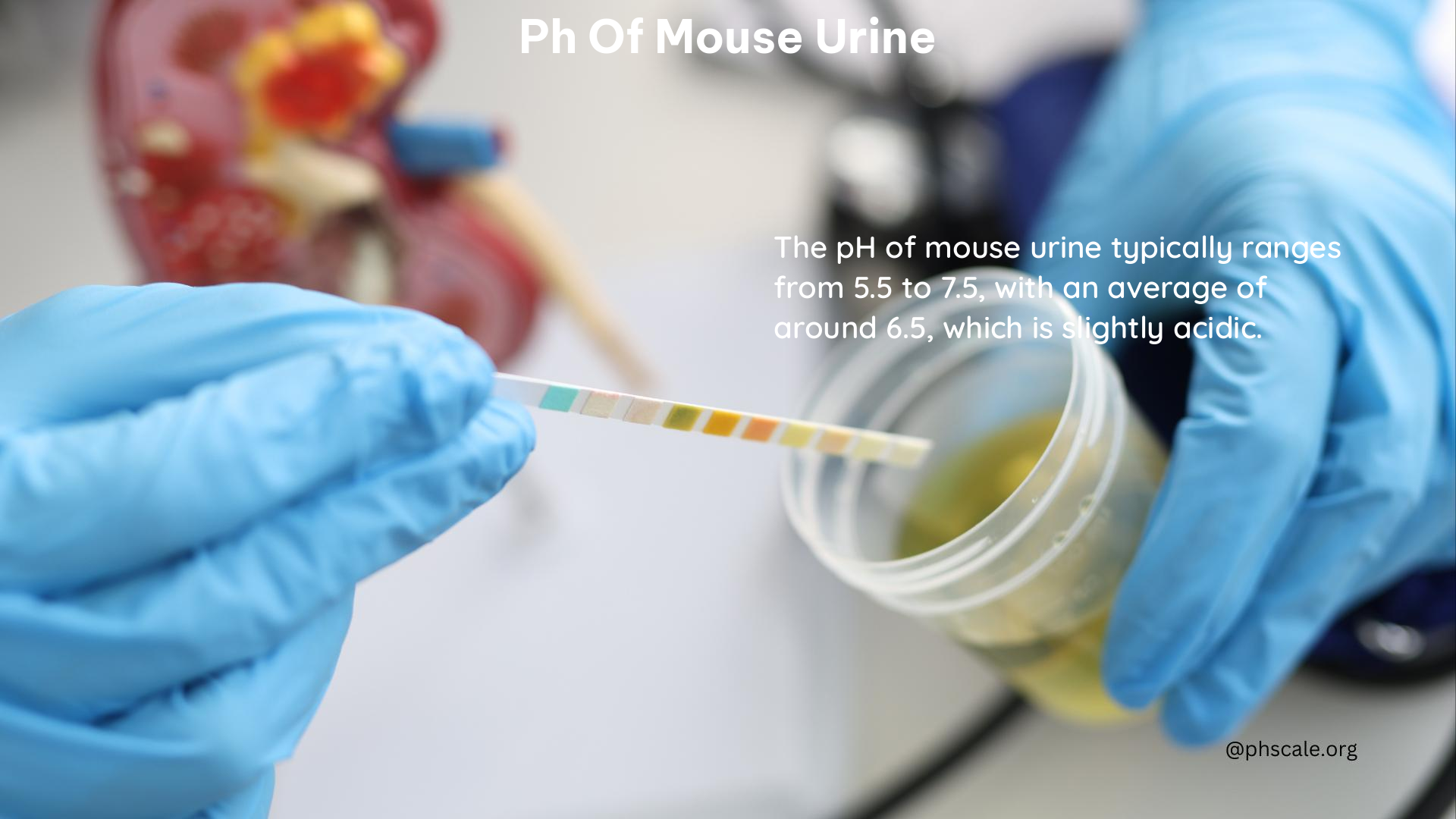The pH of mouse urine is a crucial parameter in various scientific studies, particularly in the context of laboratory mice. Understanding the typical range, strain-related differences, and diet-related factors that influence the pH of mouse urine is essential for researchers working with these animals.
Typical Range of Urine pH in Laboratory Mice
The typical range of urine pH in laboratory mice is between 5.5 and 7.5. However, this range can vary depending on the specific strain and diet of the mice.
Strain-Related Differences

Different strains of laboratory mice exhibit distinct physiological characteristics, which can affect the pH of their urine. For example, C57Bl/6J inbred mice have a lower urine pH (mean ± SD 5.7 ± 0.3) compared to CD1 outbred mice (mean ± SD 6.0 ± 0.2). These differences are likely due to variations in renal phosphorus excretion and phosphate buffering capacity.
Diet-Related Differences
Dietary cation anion balance (DCAB) significantly influences urine pH in laboratory mice. A negative DCAB acidifies the urine, while higher DCABs alkalize the urine. For instance, mice fed a diet with a high DCAB (246 mmol/kg DM) had a higher urine pH compared to those fed a diet with a low DCAB (−257 mmol/kg DM).
Artificial Mouse Urine
Artificial mouse urine, also known as synthetic mouse urine, is used in scientific research and has a pH range of 5.0–8.5, with a default pH of 6.10. This formulation is customizable to meet specific project requirements.
Contaminants and Chemicals
Mouse urine can contain various contaminants and chemicals, such as:
- Phosphorus: an important buffer that affects urine pH.
- Cations and anions: absorbed from the diet and influencing urine pH.
- Carboanhydrase: an enzyme involved in renal H+ excretion and potentially affecting urine pH.
- Acidifying or alkalizing compounds: present in the urine and influencing pH levels.
Balancing and Home Remedies
To balance the pH of mouse urine, researchers can adjust the dietary cation anion balance. For example, feeding mice a diet with a higher DCAB can increase urine pH, while a diet with a lower DCAB can decrease urine pH. There are no specific home remedies for balancing mouse urine pH, as this is primarily a concern in laboratory settings.
History
The study of mouse urine pH has a history dating back to the early 20th century, with researchers investigating the composition of mouse urine and its variations in response to different diets and strains.
Helpful pH Quantity to Consume
In the context of laboratory mice, the helpful pH quantity to consume is dependent on the specific research goals and the strain of mice being studied. Generally, a balanced diet with a moderate DCAB is recommended to maintain a healthy urine pH.
Dealing with Contaminants
To deal with contaminants and chemicals in mouse urine, researchers can use various methods, such as:
- Filtering the urine to remove impurities.
- Using preservatives to prevent bacterial growth.
- Customizing the composition of artificial mouse urine to mimic the desired pH and chemical profile.
Solutions and Alternatives
Solutions and alternatives for managing mouse urine pH include:
- Using artificial mouse urine with a customizable pH range.
- Adjusting the dietary cation anion balance to influence urine pH.
- Investigating the effects of different strains and diets on urine pH.
References
- Influence of Strain and Diet on Urinary pH in Laboratory Mice. (2021). https://www.ncbi.nlm.nih.gov/pmc/articles/PMC8000841/
- Artificial Mouse Urine. (n.d.). Biochemazone. https://biochemazone.com/product/artificial-mouse-urine-bz366/
- Strain-related Differences in Urine Composition of Male Rats of Different Ages. (2009). https://journals.sagepub.com/doi/full/10.1177/0192623309332990
- The Composition of the Urine of White Mice. (n.d.). https://www.sciencedirect.com/science/article/pii/S0021925818759723/pdf?md5=0fbff7b2cc9a9804d1f999693fca8283&pid=1-s2.0-S0021925818759723-main.pdf
- pH of Mouse Urine after 1 Wk of Dietary Supplementation with 1% NH4Cl. (n.d.). https://www.researchgate.net/figure/pH-of-Mouse-urine-after-1-wk-of-dietary-supplementation-with-1-NH-4-Cl_tbl1_24345384
